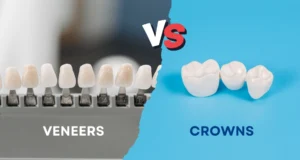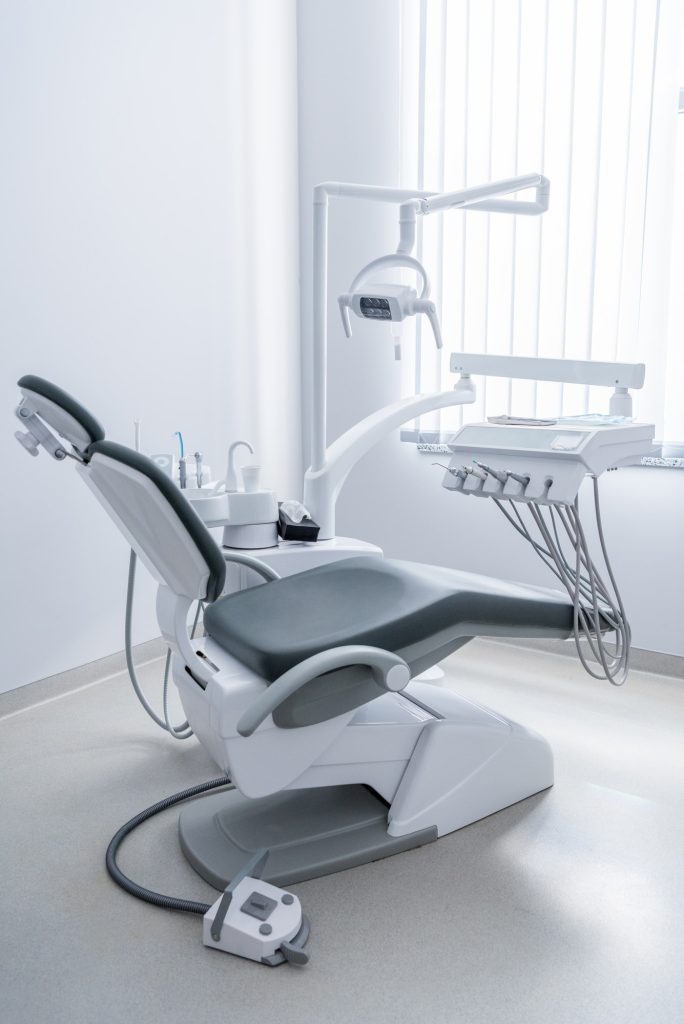Dental fillings are used to restore and protect teeth that have been damaged by decay or minor fractures. They “fill” the space left after decay has been removed, helping to restore normal function and prevent further damage.
Fillings are durable, but they’re not designed to last forever. Over time, many patients experience wear, fracture, or even loss of a filling. This is often expected over the years but sometimes it’s a sign that something else is going on.
So is it normal for a filling to break or fall out? Let’s look deeper into what causes it, when it’s a concern, and how it’s treated.
Why Do Fillings Break or Fall Out?
There are several reasons why a filling might become loose, chipped, cracked, or dislodged.
Natural Wear and Age
Like anything in the mouth that undergoes constant use, fillings are prone to wear and breakdown. The pressure from chewing and temperature changes from hot or cold foods can slowly weaken the material.
Over time, small cracks can develop, and edges may begin to lift, allowing bacteria and food to seep underneath.
Biting Forces and Teeth Grinding
Heavy bite pressure, habitual clenching, or nighttime teeth grinding (known as bruxism) can all place extra strain on your fillings. This is especially true for large fillings or those in back teeth that take on the most force.
People who grind their teeth are more likely to experience premature failure of dental work, including fillings.
Tooth Decay Around the Filling
Even with a filling in place, the surrounding tooth structure can still decay. If decay forms at the margin between the filling and the tooth, it can undermine the support of the filling and cause it to loosen or break off.
This is one of the most common reasons for older fillings to fall out.
Poor Fit or Bite Interference
Sometimes, if a filling is slightly too high or the bite isn’t balanced, certain areas may take on more pressure than they’re designed to handle. This can lead to small cracks or filling failure over time.
Trauma or Accidents
Chewing unexpectedly on something hard like a seed, bone fragment, or ice or an accident involving the mouth can cause a sudden break in a filling or the surrounding tooth structure.
Type and Age of Material
Some materials are more durable than others. For example:
- Composite (white) fillings usually last around 5–10 years.
- Amalgam (silver) fillings can last 10–15 years.
- Gold or porcelain inlays/onlays may last 15–20 years or more with proper care.
If your filling is over a decade old, failure becomes more likely due to age alone.
What Happens If a Filling Falls Out?
A lost or broken filling is not usually a medical emergency, but it should not be ignored. The tooth underneath is no longer sealed, making it vulnerable to:
- Bacterial infection
- Sensitivity to hot, cold, or sweet foods
- Structural damage or fracture
- Development of new decay
Exposed dentine or tooth pulp can also lead to discomfort, pain, or even abscess formation if left untreated.
What Should I Do If My Filling Falls Out or Cracks?
If you suspect a filling has broken or fallen out:
- Keep the area clean – Gently rinse with lukewarm water to remove food particles.
- Brush carefully – Use a soft-bristled toothbrush around the affected area.
- Avoid chewing on that side – Stick to soft foods until you’ve seen your dentist.
- Use over-the-counter dental repair kits – Available at pharmacies, these can offer temporary protection until you receive professional care.
- Book a dental appointment immediately – Don’t wait for pain or worsening symptoms.
Avoid placing aspirin or any home remedies directly on the tooth, this can irritate soft tissue and delay healing.
How Will the Dentist Fix It?
Treatment will depend on how much damage has occurred:
- Minor cracks or loss: Your dentist may simply reapply or replace the filling.
- Extensive damage or wear: If the structure of the tooth has been compromised, you may need a dental crown, which offers full coverage protection.
- If decay has formed: Your dentist will need to clean out the decay before replacing the restoration.
- If the nerve is exposed: A root canal treatment may be needed before the tooth is restored.
X-rays are often taken to evaluate the underlying tooth structure and determine the most appropriate treatment plan.
Can I Prevent Fillings from Breaking?
While some wear is inevitable, there are ways to extend the life of your fillings and reduce the risk of breakage:
- Brush and floss daily to prevent decay around the filling.
- Use a soft-bristled toothbrush and non-abrasive toothpaste.
- Avoid biting on hard objects like ice, nuts, or pens.
- Limit sticky or chewy foods that can pull at fillings.
- Wear a custom nightguard if you grind your teeth at night.
- Visit your dentist regularly for check-ups to spot early signs of damage.
Routine exams allow your dentist to monitor the condition of your fillings and take action before problems arise.
Frequently Asked Questions
Is it common for old fillings to fall out?
Yes. Fillings don’t last forever. If your filling is 10 years or older, it may begin to weaken, especially under chewing forces or if decay has developed around it.
What does a broken filling feel like?
You may notice a sharp edge, roughness, or sensitivity in the tooth. Some people feel a hole or gap with their tongue or experience discomfort when eating.
Is it painful if a filling falls out?
Not always, but some people experience sensitivity to temperature or pressure. If the inner layer of the tooth is exposed, pain can develop. The sooner you see a dentist, the better.
How urgent is a lost filling?
It’s not a medical emergency, but it should be addressed within a few days. Leaving a tooth unprotected can lead to decay or further structural damage.
Can I eat if my filling has fallen out?
Soft foods are safest, and avoid chewing on the affected side. Sticky, crunchy, or hard foods should be avoided until the tooth is treated.
Do I always need a new filling if one breaks?
Not necessarily. Your dentist will assess whether the old filling can be repaired, replaced, or if another solution (like a crown) is needed.
Don’t Wait if a Filling Breaks or Falls Out
While it’s normal for fillings to wear down or occasionally fail, it’s not something to ignore. Early attention can prevent bigger problems, including decay, pain, or the need for more invasive treatment.
If your filling feels loose, cracked, or has fallen out, the team at Radiant Smiles Dental Bundoora is here to help. We’ll assess your tooth, determine the best way to restore it, and ensure your smile stays healthy and strong. Serving families in Bundoora, Macleod, Watsonia, Greensborough, and surrounding suburbs. Book your appointment today.









